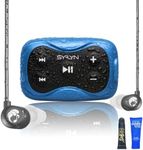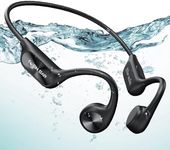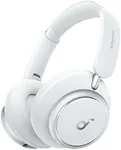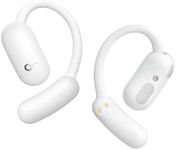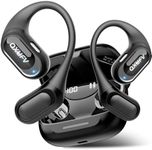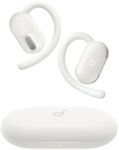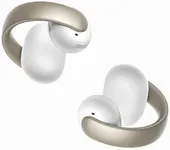Buying Guide for the Best Swimming Headphones
Choosing swimming headphones can be a bit different from picking regular headphones because they need to work well in water and stay comfortable during movement. The right pair will let you enjoy music or podcasts while swimming, making your workouts more enjoyable. To find the best fit, it's important to understand the key features that matter most for swimming headphones and how they relate to your personal swimming habits and preferences.Waterproof RatingThe waterproof rating tells you how well the headphones can resist water. This is usually shown as an IPX rating, with higher numbers meaning better protection. For swimming, you should look for headphones with a high waterproof rating, such as IPX7 or IPX8. IPX7 means the headphones can be submerged in water up to 1 meter for 30 minutes, while IPX8 means they can go even deeper or stay underwater longer. If you swim laps or spend a lot of time underwater, go for the highest rating you can find. If you only need headphones for light splashing or shower use, a lower rating might be enough.
Fit and ComfortFit and comfort are crucial because swimming involves a lot of movement, and you don’t want your headphones to fall out or feel uncomfortable. Swimming headphones come in different styles, such as in-ear, over-ear hooks, or bone conduction. In-ear types can provide a secure fit and block out water, but some people find them uncomfortable for long sessions. Bone conduction headphones rest outside your ears and can be more comfortable, especially if you don’t like things in your ears, but they may not block out water as well. Think about how long you swim and what feels best for you—try to choose a style that will stay put and feel good during your typical swim.
Sound QualitySound quality refers to how clear and enjoyable the audio is. Water can affect how sound travels, so swimming headphones often sound different from regular ones. Some headphones are designed to sound better underwater, while others may lose clarity. If you care a lot about music quality, look for headphones that mention good underwater sound performance. If you mainly listen to podcasts or audiobooks, you might not need the highest sound quality, but you’ll still want clear audio that’s easy to hear over splashing and movement.
Storage and PlaybackSince Bluetooth signals don’t travel well through water, most swimming headphones have built-in storage for music or audio files. This means you load your songs onto the headphones themselves, usually through a computer. The storage size is measured in gigabytes (GB), with higher numbers letting you store more music. If you like to have lots of playlists or long audio files, look for more storage. If you’re fine with a few albums or podcasts, a smaller amount will do. Think about how much variety you want during your swims to decide what’s right for you.
Battery LifeBattery life tells you how long the headphones will work before needing a recharge. Swimming headphones usually offer several hours of playtime on a single charge. If you swim for long periods or don’t want to charge your headphones often, look for models with longer battery life. If your swims are short, battery life may not be as important. Consider your typical swim duration and how often you want to recharge when making your choice.
Controls and UsabilityControls and usability refer to how easy it is to operate the headphones while swimming. Some headphones have physical buttons, while others use touch controls. Physical buttons are usually easier to use with wet hands or while wearing goggles. Think about how you’ll use the headphones—if you want to skip tracks or adjust volume while swimming, make sure the controls are easy to reach and use without stopping your workout.

